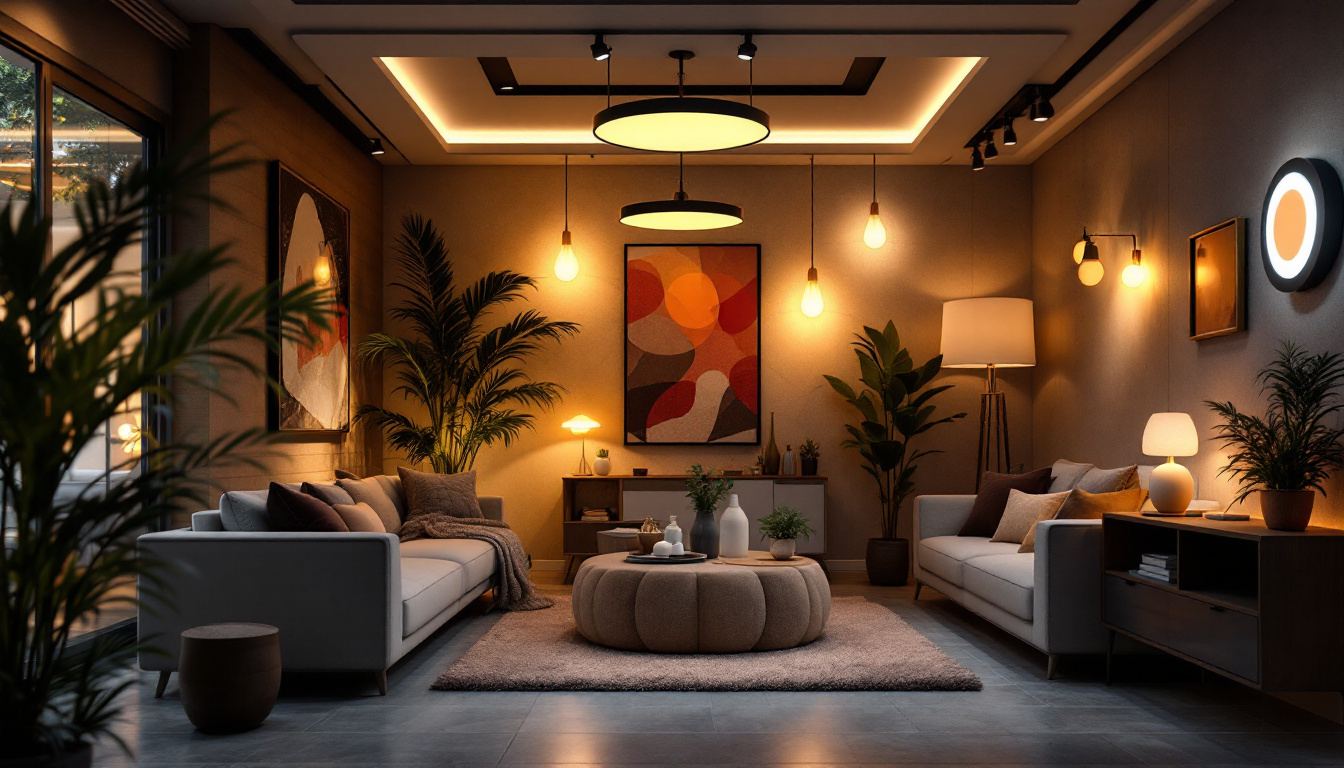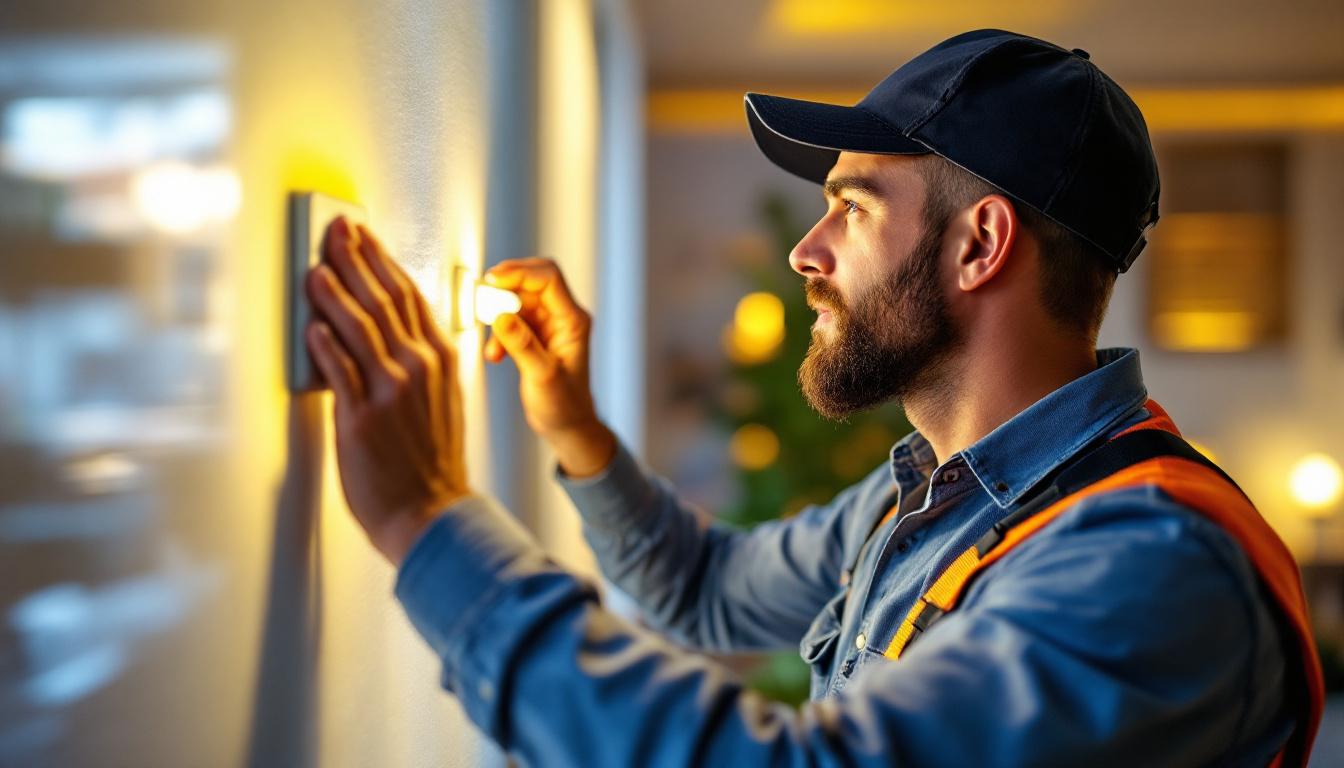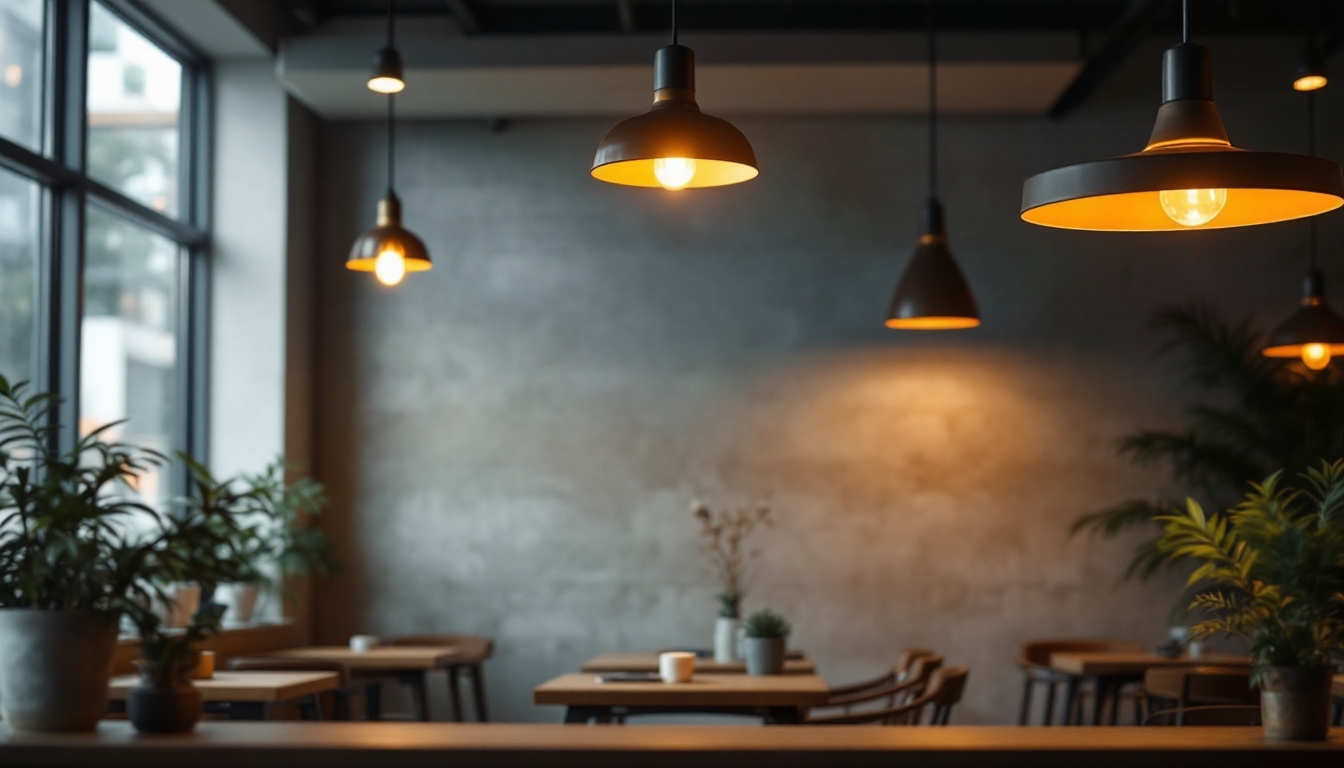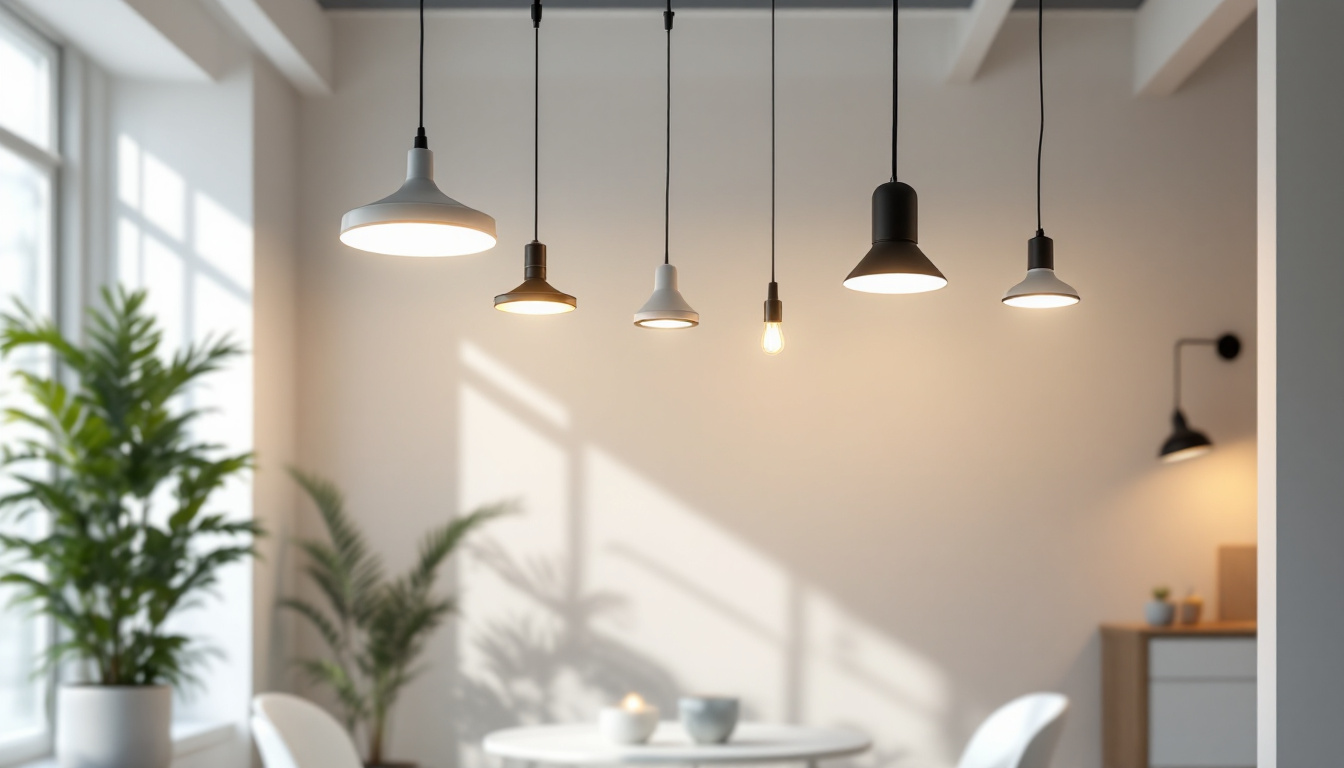
In the ever-evolving world of lighting design and installation, LED fixtures have emerged as a transformative force. With their energy efficiency, longevity, and versatility, LEDs are not just a trend; they represent the future of illumination. For lighting contractors, understanding the various types of LED fixtures available is crucial for delivering innovative solutions that meet the diverse needs of clients. This article delves into the different types of LED fixtures, their applications, and the benefits they offer in modern lighting design.
Before diving into the various types of LED fixtures, it is essential to grasp the technology behind LEDs. Light Emitting Diodes (LEDs) are semiconductor devices that emit light when an electric current passes through them. Unlike traditional incandescent bulbs, which generate light through heat, LEDs are highly efficient, converting a significant portion of energy into light rather than heat. This efficiency leads to lower energy costs and a reduced carbon footprint, making LEDs an environmentally friendly choice.
Furthermore, LEDs have a longer lifespan compared to traditional lighting options. While incandescent bulbs may last around 1,000 hours, LED fixtures can last up to 25,000 hours or more, significantly reducing the frequency of replacements. This longevity not only saves money but also minimizes waste, aligning with sustainable practices in lighting design.
LED fixtures come in a variety of forms, each designed to serve specific purposes in residential, commercial, and industrial settings. Understanding these types allows lighting contractors to recommend the most suitable solutions for their clients’ needs.
LED downlights, also known as recessed lights, are designed to be installed into a ceiling, providing a sleek and modern look. They are commonly used in residential and commercial spaces for general lighting. The ability to direct light downward makes them ideal for highlighting specific areas, such as artwork or architectural features.
One of the significant advantages of LED downlights is their energy efficiency. They consume significantly less power than traditional incandescent downlights while providing comparable or better illumination. Additionally, many LED downlights are dimmable, allowing for customizable lighting levels that enhance the ambiance of a space.
LED troffers are rectangular fixtures typically used in commercial settings, particularly in drop ceilings. They are designed to replace traditional fluorescent troffers and provide a more energy-efficient lighting solution. LED troffers are available in various sizes and configurations, making them versatile for different applications.
These fixtures offer uniform light distribution, which is essential in office environments where consistent lighting is needed for productivity. Moreover, LED troffers often come with advanced features such as occupancy sensors and daylight harvesting capabilities, further enhancing their energy-saving potential.
LED wall packs are outdoor fixtures mounted on walls to provide security and illumination for building exteriors. They are commonly used in commercial and industrial settings to light up parking lots, building perimeters, and entryways. The robust design of LED wall packs ensures they can withstand harsh weather conditions while delivering reliable performance.
One of the key benefits of LED wall packs is their ability to provide high-lumen output while consuming minimal energy. This makes them an excellent choice for businesses looking to enhance security without incurring high electricity costs. Additionally, many modern wall packs feature smart technology, allowing for remote monitoring and control.
Beyond standard fixtures, there are specialized LED options tailored for specific applications. These fixtures often incorporate advanced technology to meet unique lighting needs.
LED high bay fixtures are designed for high-ceiling applications, such as warehouses, gyms, and manufacturing facilities. They provide powerful illumination over large areas, ensuring safety and visibility in environments where traditional lighting may fall short.
These fixtures are available in various wattages and designs, allowing lighting contractors to select the appropriate model based on the height of the ceiling and the specific lighting requirements of the space. The energy efficiency of LED high bays can lead to significant cost savings over time, making them a popular choice for large commercial spaces.
LED flood lights are versatile fixtures used for both indoor and outdoor applications. They are designed to cast a wide beam of light, making them ideal for illuminating large areas, such as sports fields, parking lots, and outdoor events. Their rugged construction ensures durability in various weather conditions.
One of the standout features of LED flood lights is their instant-on capability, providing immediate illumination without the warm-up time associated with traditional lighting. Additionally, many models are equipped with adjustable beams and smart controls, allowing for customized lighting solutions tailored to specific needs.
LED strip lights, also known as LED tape lights, are flexible circuits that contain multiple LEDs. They can be cut to size and easily installed in various locations, making them a popular choice for accent lighting, under-cabinet lighting, and architectural features.
The versatility of LED strip lights allows for creative applications, such as cove lighting, backlighting, and mood lighting. With a wide range of color temperatures and RGB options available, these fixtures can create stunning visual effects and enhance the overall aesthetic of a space.
Adopting LED fixtures in lighting design and installation offers numerous advantages that go beyond energy efficiency. Understanding these benefits can help lighting contractors advocate for LED solutions to their clients.
Energy efficiency is perhaps the most significant advantage of LED fixtures. They consume up to 80% less energy than traditional incandescent bulbs, leading to substantial savings on electricity bills. This efficiency not only benefits individual consumers but also contributes to a reduction in overall energy demand, supporting sustainability efforts.
As previously mentioned, LED fixtures have a significantly longer lifespan compared to traditional lighting options. This longevity translates into fewer replacements and lower maintenance costs over time. Additionally, LEDs are more durable and resistant to shock and vibration, making them suitable for a wide range of environments.
LED fixtures provide superior lighting quality, offering bright, clear illumination without the flickering often associated with fluorescent lights. They are available in various color temperatures, allowing for customization based on the desired ambiance of a space. Furthermore, many LED fixtures are dimmable, enabling users to adjust lighting levels to suit different activities or moods.
While the benefits of LED fixtures are clear, proper installation is essential to maximize their performance and longevity. Lighting contractors should consider several factors during the installation process.
When retrofitting existing lighting systems with LED fixtures, it is crucial to ensure compatibility. Some older systems may require additional components, such as drivers or transformers, to support LED technology. Understanding the specific requirements of each fixture type can help avoid installation issues and ensure optimal performance.
Effective lighting design involves careful consideration of fixture placement and spacing. Overlapping light can create unwanted glare, while inadequate coverage can lead to dark spots. Lighting contractors should conduct thorough assessments of the space to determine the best locations for fixtures, ensuring even illumination throughout.
Incorporating smart technology into LED installations can enhance functionality and energy savings. Many modern LED fixtures are compatible with smart controls, allowing users to adjust lighting remotely, set schedules, and integrate with other smart devices. Educating clients about these options can lead to more efficient and user-friendly lighting solutions.
The landscape of LED lighting is continually evolving, with new trends emerging that will shape the future of lighting design and installation. Staying informed about these trends can help lighting contractors remain competitive and provide cutting-edge solutions to their clients.
Human-centric lighting focuses on creating environments that support human well-being and productivity. This approach considers the biological effects of light on individuals, such as circadian rhythms. As awareness of the importance of lighting on health grows, more clients will seek solutions that promote comfort and enhance mood.
The integration of smart technology into lighting systems is becoming increasingly prevalent. Smart lighting allows for greater control over illumination, enabling users to customize settings based on their preferences. As technology advances, the demand for interconnected lighting solutions that can be managed through mobile apps or voice commands will continue to rise.
As sustainability becomes a priority for businesses and consumers alike, the demand for environmentally friendly lighting solutions will increase. This trend includes not only the use of energy-efficient LED fixtures but also the adoption of sustainable materials and practices in lighting design and installation. Lighting contractors who prioritize sustainability will be well-positioned to meet the needs of eco-conscious clients.
LED fixtures are undoubtedly the future of lighting design and installation, offering a myriad of benefits that extend beyond mere illumination. With their energy efficiency, longevity, and versatility, they provide innovative solutions for various applications. Understanding the different types of LED fixtures and their specific advantages is essential for lighting contractors looking to deliver exceptional service to their clients.
As the industry continues to evolve, staying informed about emerging trends and technologies will be crucial for success. By embracing the potential of LED lighting, contractors can not only enhance their offerings but also contribute to a more sustainable and energy-efficient future.
Ready to harness the future of lighting design and installation with LED fixtures? At LumenWholesale, we provide lighting contractors with the highest quality, spec-grade LED lighting products at prices that can’t be beaten. Say goodbye to local distributor markups and hello to our extensive selection that meets rigorous industry standards. With free shipping on bulk orders, you can trust that you’re getting premium lighting solutions at the best value, with no hidden fees. Elevate your lighting projects by choosing LumenWholesale, where quality, affordability, and convenience come together seamlessly. Discover our unbeatable wholesale deals and transform your lighting installations today by visiting Wholesale Lighting at the Best Value.

Discover effective strategies for training your team in using the Leviton Dz15S lighting system.

Discover innovative hacks and expert tips for smart lighting contractors using Rab Floodlight systems.

Discover expert insights into commercial pendant lighting fixtures with our comprehensive guide tailored for lighting contractors.

Discover how understanding IC ratings can future-proof your lighting projects.